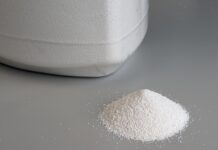
DECONTAMINATING and recovering the soil from polluted areas is a long, complex and expensive process. The LIFE I+DARTS project, co-financed by the EU’s environmental funding initiative LIFE+, aims to address this problem by developing a protocol to enable the recovery of soils contaminated with arsenic and heavy metals in former mining and industrial sites.
The project, which runs until August 2016, is already revealing useful results, according to its organisers. The team has found that plants such as the birch, willow and yellowhead, and leguminous plants such as the melilotus alba, can accumulate heavy metals and arsenic.
Project experts have also detected the presence of certain endophyte bacteria that resist high concentrations of arsenic and the existence of fungi that favour the processes of decontamination. These advances open the door to using these biological techniques for soils that have been classed as contaminated for more than a decade.
The team is engaged in five basic actions over the course of the four-year project: bio-geochemical site characterisation and human health risk assessment; soil remediation at pilot scale and a comparison between green remediation technologies and physico-chemical technologies; the development of the protocol as a tool for the management of arsenic-polluted soils and the dissemination of information on the project activities and results.
Project coordinator, Professor José Luis Rodríguez Gallego, has been leading the team since 2012.
Results are being tested in three different contaminated sites of Asturias in Spain: El Terronal (Mieres), the site of the old factory of Nitrastur (Langreo) and the old mercury mine of Olicio (Cangas de Onís). These sites all have remains of Arsenic in their sub-soil – there is also mercury in two of them and an anomalous concentration of lead in one.
Professor Rodríguez Gallego notes: “In truth, we have found very heterogeneous sites and this has proved to be a difficulty. There are very different terrain compositions over a short distance, and this complicates our actions, but we have also been surprised by the great capacity of the environment to regenerate.”
• For more information visit the LIFE I+DARTS project’s site at www.lifeidarts.eu/.






